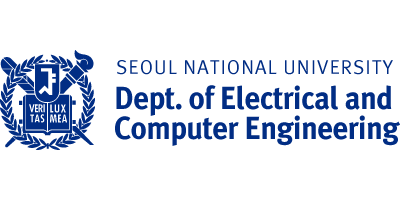Prof. Hyuk-Jae Lee, ‘Talents in semiconductors’ Urgent need for revolutionary measures (The Munhwa Ilbo, 2021.05.10.)
Hyuk-Jae Lee, Dean of SNU ECE
A worldwide war of semiconductors is in full swing. Korea, which has the world’s second and third best companies in the semiconductor industry will find it difficult to avoid this war. Korea’s major competitor in this war is Taiwan’s TSMC. TSMC is in the semiconductor foundry business and has a market share of over 50%. Korea’s Samsung Electronics is the runner up, with a market share in the late 10%s. To succeed in the war, we will have to accurately analyze the cause of our deficiencies. If you look into such cause analyses, one important factor, however, is being overlooked.
Korea’s businesses often interpret the lag as occurring because of our late start compared to TSMC in the foundry business. Only half of this statement is correct. TSMC started its foundry business in 1987, and Samsung Electronics launched it in earnest in the mid 2000s. So, it is correct that Samsung had a late start. However, there was an instance where Samsung Electronics overtook TSMC in terms of technology. Samsung Electronics, which had been behind in the development of 28-nm and 20-nm processes, commercialized the 14-nm process in 2015, before TSMC. As a result, it succeeded in winning orders for smartphone semiconductors from Qualcomm and Apple. At the time, people were filled with hopes of winning the competition with TSMC and prospering in the foundry business. People thought that this would follow the precedent of overtaking Japan, the world’s largest semiconductor producer, and becoming the world’s number one memory producer in the 1980s.
However, TSMC was determined, and it succeeded in developing the next generation process, the 10nm process, at nearly the same time as Samsung Electronics, and started to again take the lead in the 7nm process. As a result, TSMC has again won priority orders for the major products of Qualcomm and Apple. Looking at this series of events, it can be noted that Samsung Electronics is not at a great disadvantage as a latecomer in the current technology competition, and that the fast-chasing strategy we often use will not work well.
When Samsung Electronics won the 14nm competition in 2015, the business division heads, executives, and regular employees of Samsung's System LSI division all worked together to develop the technology. The efforts they put forth to develop the technology are well known to those working in the semiconductor field. I vividly remember that my college classmates who worked as executives and my students who worked as regular employees worked hard all week to prepare for weekly inspection meetings. In the end, the passion and hard work of talented engineers were the main factor in winning the competition. It must have been the same factor that allowed TSMC to again overtake Samsung Electronics. Both Samsung and TSMC can secure sufficient development funds and process equipment, so the level and passion of engineers determine their competitiveness.
To win the semiconductor war, major countries are providing policy support. In China, President Xi Jinping recently visited the prestigious Tsinghua University and decided to establish a semiconductor university to produce human resources. The United States has a wealth of manpower because talented people gather from all over the world. On the other hand, in Korea, there is an absolute shortage of semiconductor manpower. In particular, the limit on the number of universities in the metropolitan area is a major obstacle to nurturing semiconductor manpower. Seoul National University also tried to establish a department in the semiconductor field in 2019, but gave up because the internal and external conditions were not ripe. In order not to follow the footsteps of Japan, which possessed the world's best semiconductor companies in the 1980s, but lagged behind in the technological development competition, it is urgent to cultivate innovative talents.
Source: http://ee.snu.ac.kr/community/news?bm=v&bbsidx=51351
Translated by: Jee Hyun Lee, English Editor of Department of Electrical and Computer Engineering, jlee621@snu.ac.kr


